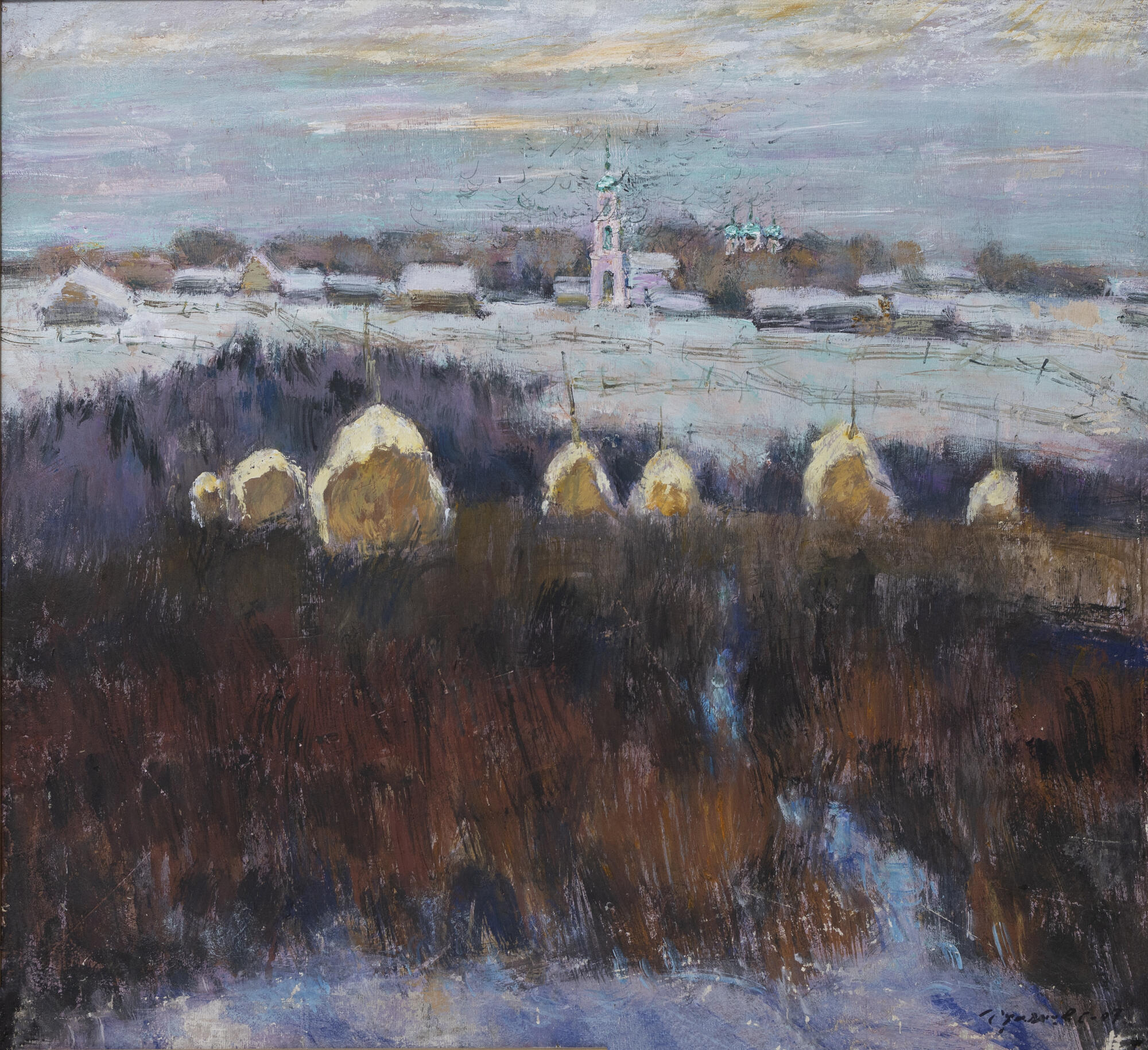Sergei Sergeevich Rumyantsev (1928–2013) was born in the village of Zavrazhye, Kostroma Governorate to a peasant family. His passion for painting emerged early when he was introduced to watercolor paints in the house of his great-aunt.
As a strong broad-shouldered youth he experienced the harsh reality of having to earn a living. Before becoming an artist, he was a shoemaker’s apprentice and a blacksmith in liberated Leningrad. He finished his military service in the rank of officer, worked as a policeman, yet continued painting.
In 1957, Sergei Rumyantsev entered the correspondence courses of the Department of Drawing and Painting of the All-Union House of Folk Art named after Nadezhda Krupskaya in Moscow. Academic assignments of those years with positive evaluations of teachers indicateв that the student of correspondence courses was a capable young student with a natural gift for color.
Rumyantsev had to make a choice between either becoming a party official or stepping foot into the unknown and pursuing art. He chose the second option, despite already having a family and children. His career as an artist was rather successful: Rumyantsev became a member of the Union of Artists, and then an Honored Artist, his works were displayed in numerous exhibitions held in different cities and countries.
His lack of formal education was in some ways beneficial. The works of Sergei Rumyantsev are filled with sincerity and spontaneity. His works were inspired by the established traditions of the lyrical landscape. He embraced the idea of “the beauty of the homeland”, which was a characteristic trait of the art of the late 19th — the early 20th century.
However, the key elements to his growth as an artist were his trips and long-term work at academic country houses for artists. He visited the “Senezh” House for Artists, the Repin Academic Dacha, and the Kardovsky House For Artists in Pereslavl-Zalessky.
His desire to portray nature in a poetic light is evident even in his early landscapes. The theme of the Russian village with its past, gloomy present and natural beauty became the primary subject in his work.
The landscape “View of
Winter Domnino” reflects the true image of the nature of Central Russia. The
painting is distinguished by a sense of breadth, distance, hence the
contemplative mood, with the bell tower and the domes of the temple looming in
the horizon.


